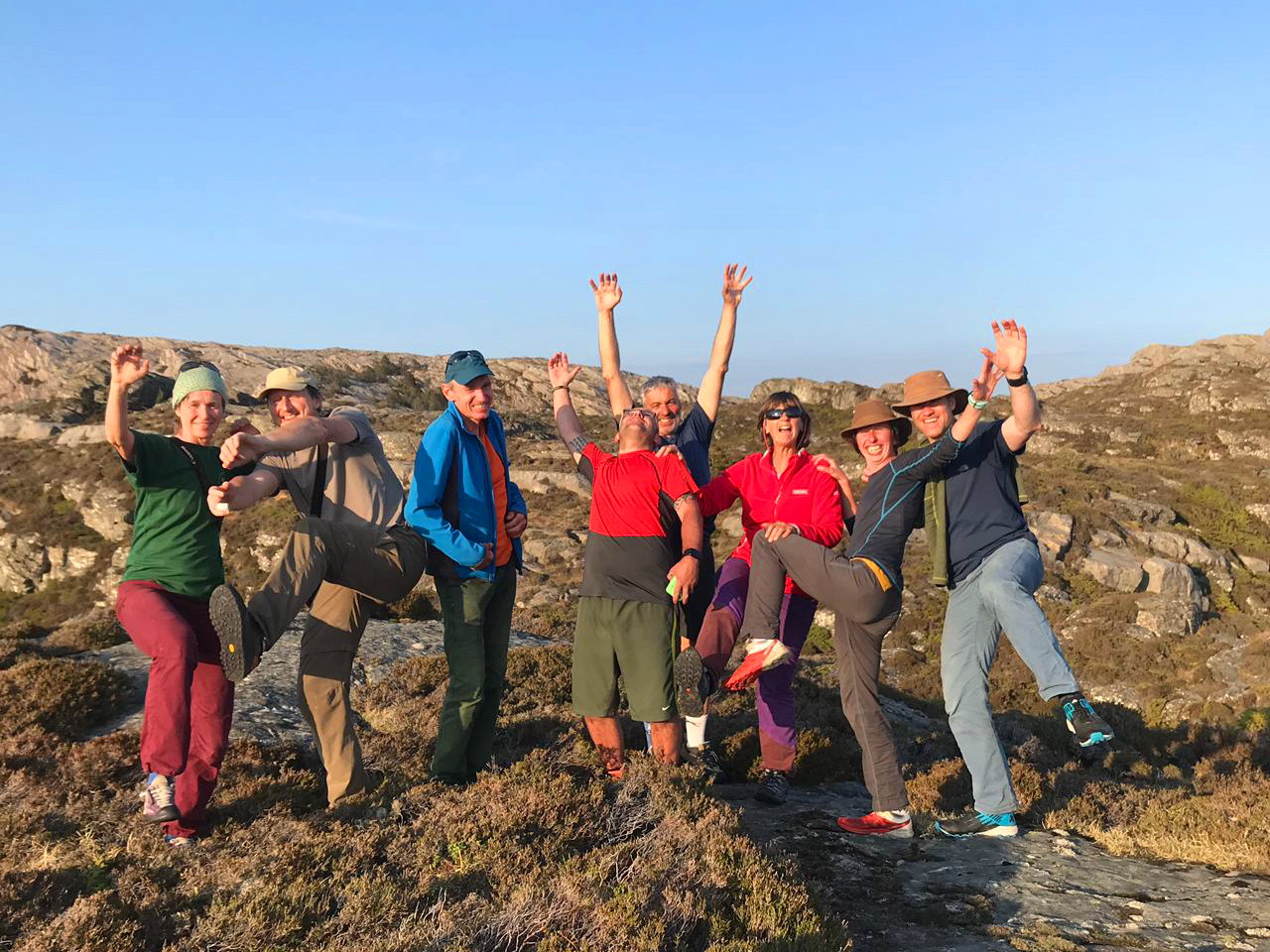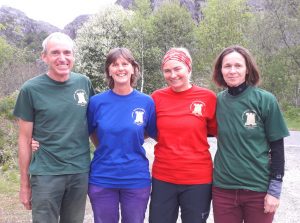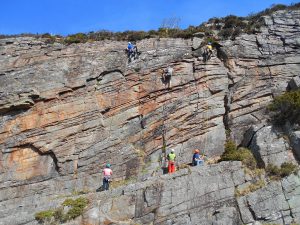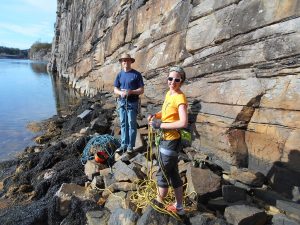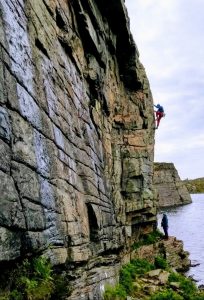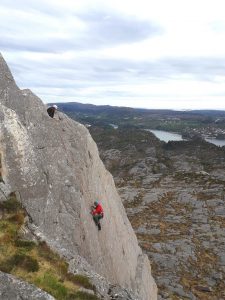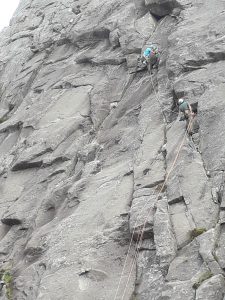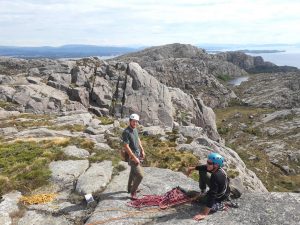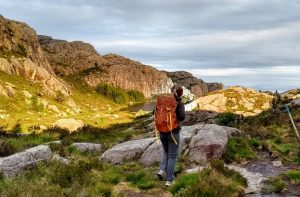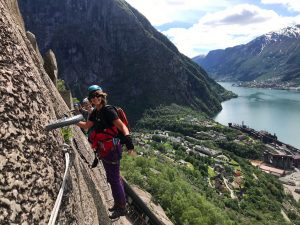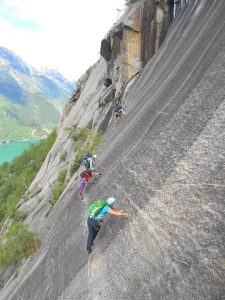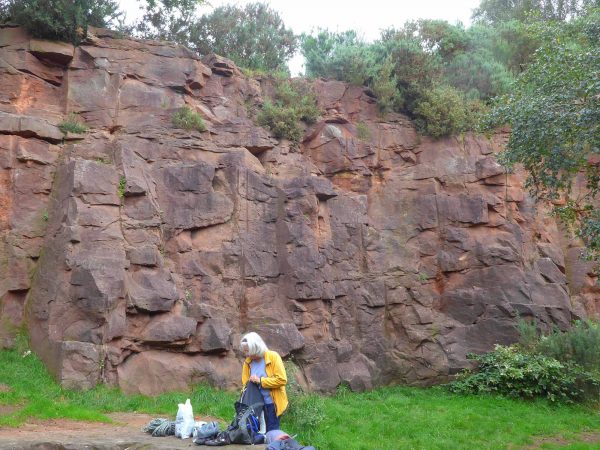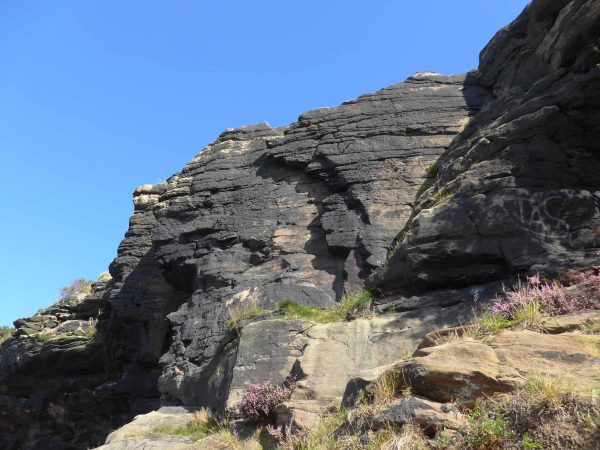We thought it would be a good idea to let everyone know what we discussed at the Castle committee meeting held on 21st April 2023:
• Geoff highlighted the success of recent club events including the away meets to Scotland and Snowdonia, the ceilidh and the celebration for Charles’ 90th birthday. He thanks all meet leaders and activity organisers for their hard work.
• Future away meets were proposed for 2024 including Roy Bridge (February/March), Capel Curig (Easter) and Braemar (May).
• Now that we have decided to keep the lease on the clubroom, Paul and Vanda are planning a maintenance and cleaning day to be held on Monday 22nd May from 4pm. Willing volunteers needed!
• The recent New Members Meets were a great success. We agreed to ask Gordon, the equipment secretary, to buy three new climbing harnesses for use at future meets and training sessions. We are also looking for volunteers to help organise the next New Members Meet planned for September.
• The committee is currently investigating how the club can streamline and improve club communications including reviewing current methods and trialling new options. This is intended to improve clarity in club communications and to assist in the smooth running of the club.
• We are looking for ideas to reduce the club’s carbon footprint. Car sharing is an obvious way – but we welcome other ideas.
• The membership team emphasised how important it is to have a complete, up-to-date database of club members to allow the membership process to run smoothly, provide emergency contact information and identify member’s privacy requests (such as use of photos on social media). The committee agreed to send out a message to all members encouraging them to complete the Membership Renewal Form and explaining the reasons why it is important.
Finally we are always keen to receive suggestions for club meets and social activities – so if you have any bright ideas please let us know!
All posts in Club News
Club Room Vote
56 of 98 members have now voted. Voting will close on October 31st so please do yours now. There is an option to abstain and it would be useful if members who really do not mind either way used this to give the committee a full picture of club feelings. If you are having problems voting please email me so I can help. Lin.
Recruitment of working groups on the future of the clubroom and length of tenure of committee members
Message from our Vice President Lin Warriss, dated 14 Jan 2022
An outcome of our AGM was the need to establish working groups to look at the future of the clubroom and tenure of committee posts. We are now seeking volunteers for the groups, the briefs for which are below.
We are aiming for small groups (single figures) covering cross sections of the membership, with at least some people with topical knowledge. Groups would initially be convened by a committee member who would look for mutually convenient meeting times but the group could then appoint their own chair and note taker.
We cannot quantify the time demands, but you need to factor in availability for meetings and research tasks, over the next five months or so. Findings and recommendations to be made to the committee no later than June 2022.
- The future of the clubroom. This group will build upon the work already done by the committee to establish whether the club room continues to be an asset to the club and to produce information for circulation prior to an all-member vote. The vote will be held before our next AGM so that any necessary amendments to the constitution may be passed. Consideration should be given to:-
- What might be done to maximise the use and user friendliness of the current clubroom to avoid abandoning a unique asset without due consideration
- Cost effective alternative venues for current and future club activities. (e.g. meetings / socials / training on wall)
- Provision of cost effective, suitable and accessible storage of our library and equipment.
- The length of tenure of committee members. This group will look at the current constitution as it pertains to the committee and produce proposed amendments for consideration at the next AGM. Length of tenure is the main focus but a couple of anomalies have been identified which would benefit from clarification as part of the process.
The current rules limit the tenure of the President and Vice President to 2 years but do not cover any other roles.
Consideration should be given to:-
- Established good practice, whether from the BMC or other clubs of a similar size and remit.
- Encouraging fresh ideas versus losing existing expertise.
- Practicalities such as changing banking authorities every time the treasurer and other signatories are changed.
If you would like to join one of the groups, please email Lin Warriss (Vice President) on linwarriss@aol.com stating which group you would like to join and whether you feel you have any particular knowledge which might support the group. This should be done before Friday 28th January so that the committee can discuss group membership at our February meeting.
Follow up from Lin, dated 21 Jan 2022
Hello again
linwarriss@aol.com
Club equipment
Club equipment which members can borrow includes: 2 helmets, 2 harnesses, ice climbing axe and hammer, avalanche probe, snow shovel, 5 ice scre ws, wart hog, and two pegs. To borrow them contact myself or Paul Embley. They are stored in the club room. If people want equipment for the New Year Scottish trip let me know and I’ll bring it up. Geoff Nichols.
New Castle t-shirts and car stickers now available to order
Gemma has ordered some new Club T-shirts and car stickers. If you would like to buy either or both, please follow the instructions here.
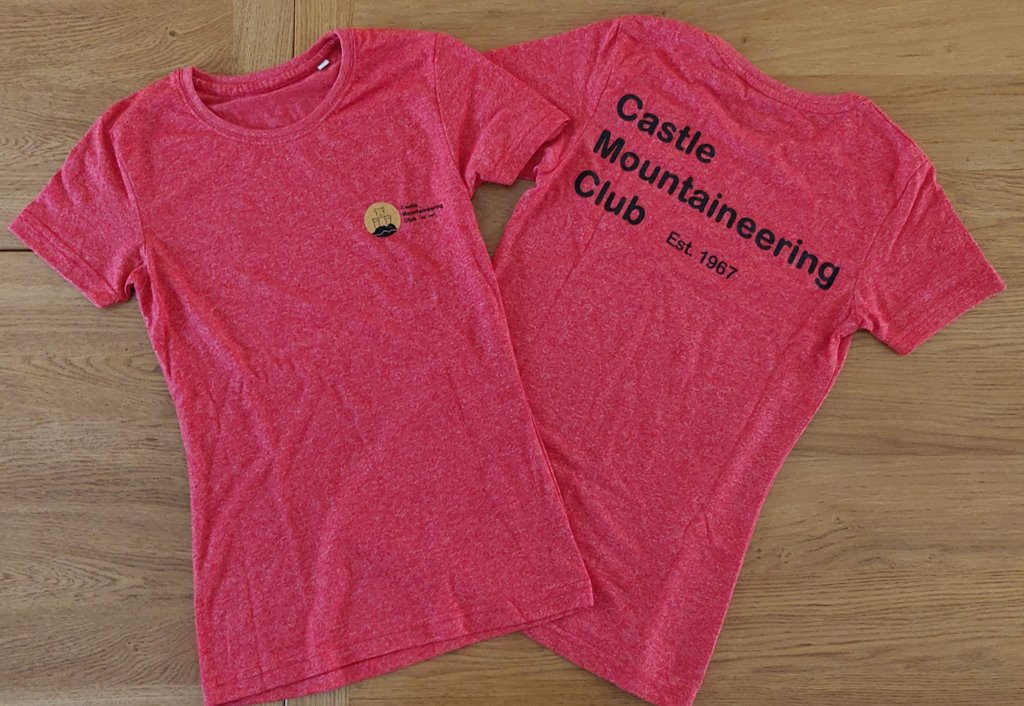
Covid Update
Message from the Chairman:
With the recent changes to the Government’s Covid advice, the Committee have reviewed how the Club meets are organised to make sure we can keep the Club active and comply with the new Covid three tier system.
1. The rule of six will apply to all official walks.
2. Tier 1 & 2 (high risk) and Tier 3( very high risk) are unable to mix or cross borders, so we will try to organise walks for each group. This will depend on if walk leaders come forward to lead each group. This applies for Thursday and Sunday walks – volunteers welcome.
3. If you live in a Tier 1 or 2 area you must only walk in this group. This also applies to members who live in the Tier 3 area. This follows advice about travel in and out of each area.
4. The booking system will be active for each walk on the website and the meet leader will confirm how they want contacting after you have booked.
5. Cycle meets and climbing meets will be still be informal and arranged through WhatsApp and must follow the same rules.
The Government will review the Three Tier System and we have arranged a committee meeting in line with this in case there are any changes, so we can review them and amend any rules for Club meets.
Thanks and stay safe.
Chris Lunn
11,000 routes – WhiTicker’s Almanac!
So Linda spilled the beans on the WhatsApp group, and my little secret is out! I have been “persuaded” to write a bit about it!
Those of you that were around the CMC in 2015 will recall that I climbed my 10,000th different rock climb in July of that year, whilst on holiday in France. Since then, the majority of the next 1,000 ticks seem to have been acquired on trips to Europe, so when Covid turned up, I started to worry that the 37 remaining routes I needed to reach 11,000 might be harder to achieve than anticipated. The problem being, I have climbed extensively in the U.K. over the years, and there are very few options at an easy enough grade that I haven’t climbed already.
When we were finally released from lockdown, even climbing things I had done umpteen times before was hard work, but I did find 3 Diffs and an HVDiff at Castle Naze that had previously escaped me, and so began the chipping away at the 37. A trip to Back Forest (near The Roaches) was very discouraging, as I found that someone had cranked up the angle of the crag since I had last been there, as well as filling all the routes I hadn’t done with vegetation, and coating their finishes in green slime. After that, I struck gritstone off the list, and was pleased to get a really good Severe tick at Pleasley Vale (limestone). 28 to go!
A new strategy was needed, so we booked a campsite near Frodsham, for 4 nights, and headed over there in our trusty VW campervan. Cheshire might not seem a very obvious destination, but it was chosen for the reason that I had a copy of Cheshire & Merseyside Sandstone that I had never used. It contained a delightful-sounding quarry at Irby, in The Wirral – clean, quick-drying, south-facing sunny slabs, with the majority of the 27 routes in the Diff to VS range. Also there was Helsby – I had climbed here twice in 1975, but as we didn’t have a guidebook, I still don’t know what routes I did, so they haven’t been counted.
We duly arrived at Irby Quarry, and were mildly discouraged by a damp-looking west-facing wall, and some fairly extensive growth of gorse bushes at the top of the crag. However, the first section of the south slabs was clean and dry, and the top of the crag clear, so we set to, working our way up from Diff to VS, and thoroughly enjoying the slabby, technical climbing, with just adequate protection. A final Severe on the West Wall proved to be the greatest test of the day. I came away feeling quite pleased with progress, especially as I had managed a couple of VSs. 22 to go!
Helsby is the major crag in Cheshire, and is well seen from the M56 as you head to or from North Wales. My advice is – keep going! The crag faces north to northwest, so doesn’t get much sun until mid-afternoon. The sandstone rock is mostly black (or green with slime!), and mostly very steep to alarmingly overhanging. Just to help matters, it had rained during the night, and was very windy when we inspected the routes. Even getting around at the foot of the West Buttress was hard work, and we didn’t see a single route that attracted us enough to get the gear out. Instead, we flogged up to the top of Helsby Hill, where there was a superb view, and a sunny meadow with sheltering bushes where we had lunch. Suitably fortified, and with the sun now reaching the southern end of the Upper Tier, we finally got the gear out for a pleasant-looking 7 metre long VDiff called CB Crack. Appearances can be deceptive – this was the VDiff from hell! It latched on to you the moment you left the ground, and didn’t relent until you hauled out at the top – thank goodness those final holds were HUGE! Pat put in a valiant effort to remove my runners, but had no strength left for the remaining moves. We returned to camp to lick our wounds. 21 to go, but if they were all going to be like that, I would need the rest of the year!
Back to Irby next day, where we managed to find a few more routes that could be climbed without getting ripped to shreds by gorse on the finishing moves. Someone needs to go there with full body armour and some long clippers, because it deserves to be climbed on more often. 16 to go!
Friday saw us parked at the foot of Hellsby (sic!), but in a quandary. Conditions were similar to Wednesday, i.e. windy and grey, with hints of rain around. There was one other option – drive 38 miles in the wrong direction to get to Dyserth – Dyserth Castle Slab had some nice-sounding sport routes, and 3 of them might even be easy enough for the likes of us. The drive there was rapid, and the weather better there than at Helsby. Unfortunately it took us some time to find the crag, but I won’t go into that! It was well worth it, though, and I had soon ticked three more lovely routes, and we could return to Sheffield with only 13 more needed!
Despite my drubbing at Helsby, I didn’t feel I was climbing too badly, so a few days later we headed up to North Lancashire, to a campsite at Crooklands, on the southeastern end of the Lake District. En route we stopped off at Warton Small Quarry, but unfortunately it had sprouted an inordinate amount of vegetation, as well as getting steeper, since my last visit, in 2001. Working on the basis that these days sports crags get more traffic, we quickly adjourned to Barrow Scout Cove, where the easy routes were still quite hard, and the rest were for wall-rats. 11 to go!
We have been to Hutton Roof crag on several occasions in the past, but despite this, there were still a number of routes to “tick”. We had a lovely day up there, climbing the superb juggy limestone, but got rather more ticks than we bargained for, and these little bloodsuckers had to be removed with a specialist tool! Despite these attentions, we finished the day with only 2 more needed.
So, the great day was to be spent at Farleton Upper crag – quite a long walk-in at 20-25 minutes guidebook time, so longer than that for us. The routes were also a bit longer than the norm around here, and didn’t come into the sun until the afternoon. This provided the perfect excuse for a leisurely walk-in, and lunch before we got our climbing gear on. Route 10,999 was called Hurricane (VDiff), and turned out to be a superb and memorable climb – one helluva vdiff! Unfortunately, Pat strained something in her foot while seconding it, so sat out number 11,000. This was Typhoon (VDiff), which was also excellent, but not quite as fine as Hurricane. I abseiled for the gear, and then decided I might as well do Head Wind (Severe), just to get me on my way to 12,000! Back in camp, a nice bottle of Cremant d’Alsace provided a celebratory accompaniment to our Thursday night curry.
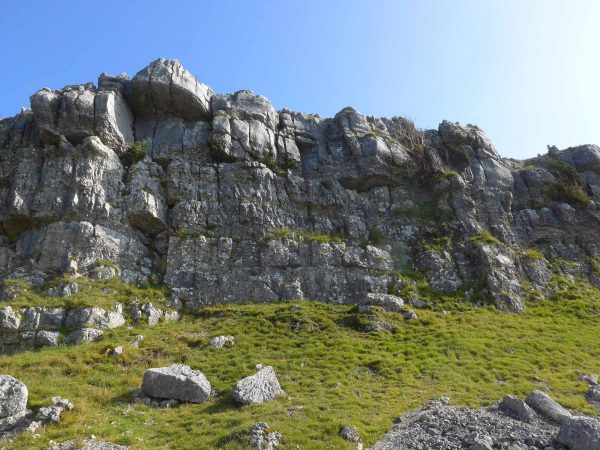
2020-09-17ImgMar0006 – Farleton Upper crag, with the lines of Head Wind, Typhoon and Hurricane in the centre of the photo.
My first recorded climb was in June 1970 (The Turnpike, Diff, on Alport Stone, solo up and down!), though I didn’t do the second until November 1971. I didn’t set out to count the routes I climbed, but recorded the names, grades, who I climbed with, etc and put a number beside it, starting naturally with one. If I was repeating a route, it didn’t get a number. So that it how I know how many routes I have climbed!
Those of you that saw my Desert Island climbs presentation on Zoom earlier this year will know that I found it extremely difficult to select 8 (or was it 9?) of my favourite climbs. As for favourite gritstone climbs, often the ones that I have enjoyed the most have been the ones that I would never want to do again – The Unprintable and Flying Buttress Overhang, at Stanage, come immediately to mind. Puppet Crack at Chatsworth was satisfying because I had failed on it previously. Wuthering at Stanage, Great North Road at Millstone, and Moyer’s Buttress at Gardoms are examples of great routes that I have been happy to repeat (though not too often!). At the end of the day, we climb to enjoy ourselves, and I got as much out of those three routes at Farleton as I ever did out of any Extreme routes that I climbed when I was younger and fitter.
See you on the crags!
Martin Whitaker.
Meets resumed!
Club meets have resumed. For more details, see message from Geoff Nicols on 15th September 2020
Covid-19 announcement; all meets suspended
Your committee has been pondering over the current C19 situation for a couple of days. After initially cancelling all indoor activities, we have now come to the sad, but inevitable decision to CANCEL ALL MEETS UNTIL FURTHUR NOTICE, pending government and medical advice.
However, we don’t want everybody to completely lose contact with each other or have nothing to do, so watch this space for future online activities etc.
Keep healthy and smiling
Paul Gibson
Meets Secretary. 23 Mar 2020
Norway climbing trip – May/June 2019
Seven of us – Linda, David, Kial, Gemma, Steve, Chris and Hugh flew to Bergen in mid May to experience the trad. and sports climbing opportunities close to the city. Kari was an amazing host and opened her house to us all, providing great hospitality, which went as far as passing on her cold to Linda and subsequently Hugh and David! Our first duty, the morning after we arrived, was to celebrate the National Day of Norway with a traditional breakfast, with hosts Kari and Randi in national costume, and a street parade. However, we were soon on the rock!
Bergen has an average of 260 days rain a year and appeared to have one of the highest per capita ownerships of Gortex in the world. However, the islands to the west – Sotra and Oygarden – where most of the climbing is, are much drier. We hit a perfect weather window over the first five days so climbed until we dropped. The trad. climbing we did was mostly on granite from single to four pitch routes. The sports climbing was largely on gneiss, characterised by extensive horizontal banding on steep walls. The climbing was never more than 30 minutes from the road but in beautiful quiet locations, sometimes next to the sea. The crags were quiet, especially the trad. ones
Eventually the rain did catch up with us (we began to understand why the guidebooks are published on waterproof paper) so we spent a day in the city and walked up one of the hills that surround Bergen. Another day’s climbing and Steve and Chris were on their way home. Kial and Gemma had a day in the fjords, while the other three also headed there to stay on Amund and Randi’s farm for a couple of nights. We visited a very wet Uskadalen on the way – amazing granite slabs with multi-pitch routes. Hopefully we will get back there one day.
Randi and Amund took Linda, David and Hugh on a very enjoyable Via Ferrata above the town of Odda. It follows old wooden ladders and then staples across granite slabs and walls, beside huge iron pipes which used to supply water for a hydro-electric scheme. From the top there were extensive views along fjords with glaciers above. Following a couple more days on tourist activities, including ferry and train rides and a visit to a medieval stave church, we returned to Bergen. The last days were spent dodging the weather, including two half days climbing and a great evening’s sea kayaking with Laila.
Thanks again to Kari and Randi and we hope to welcome them to the Peak District soon.